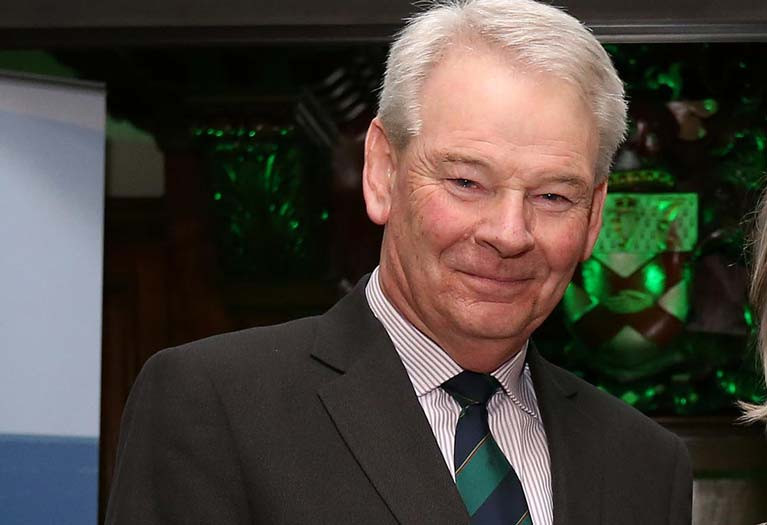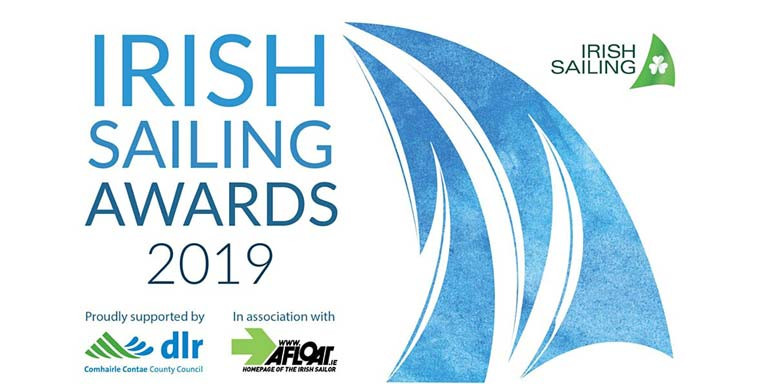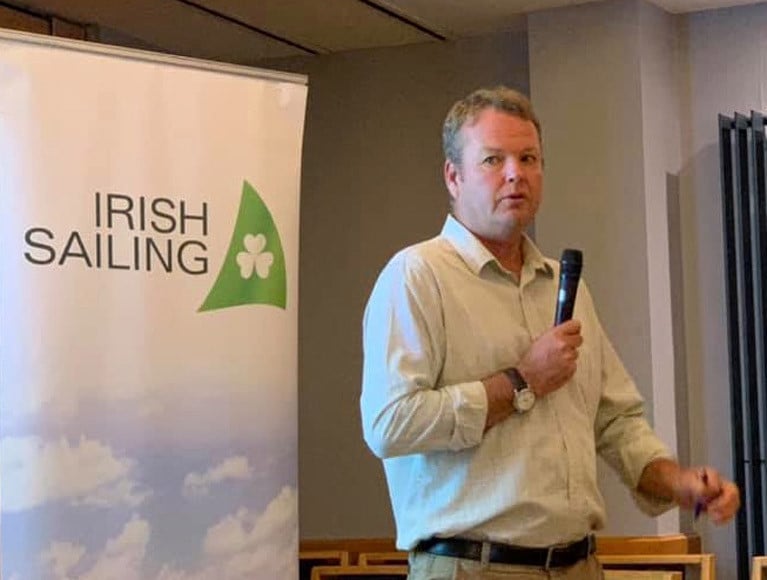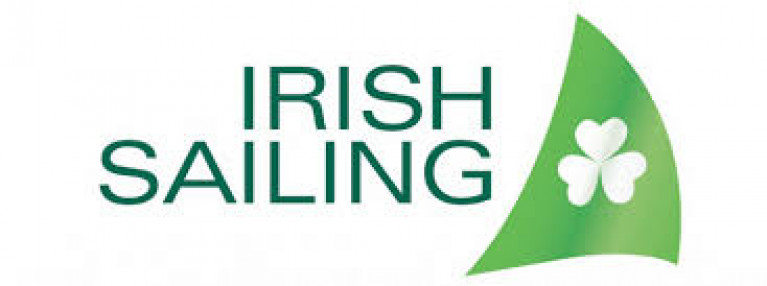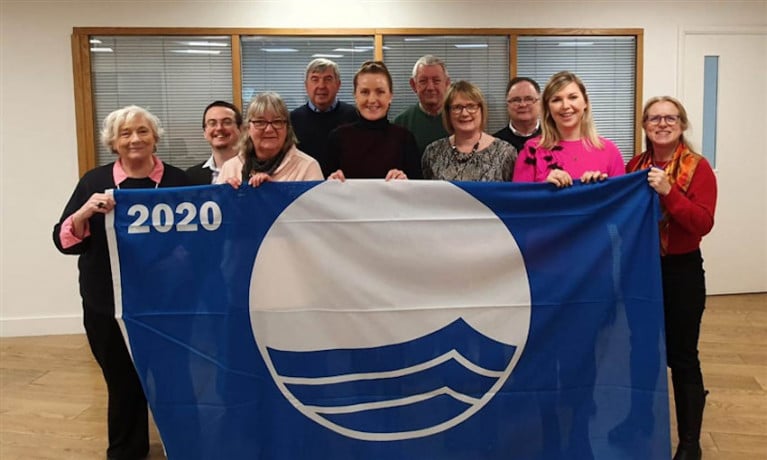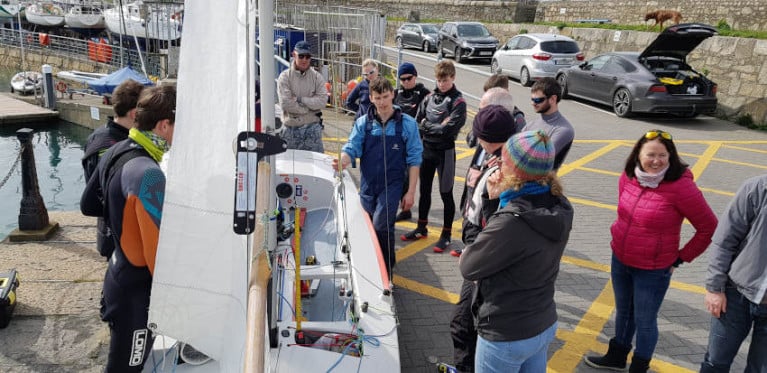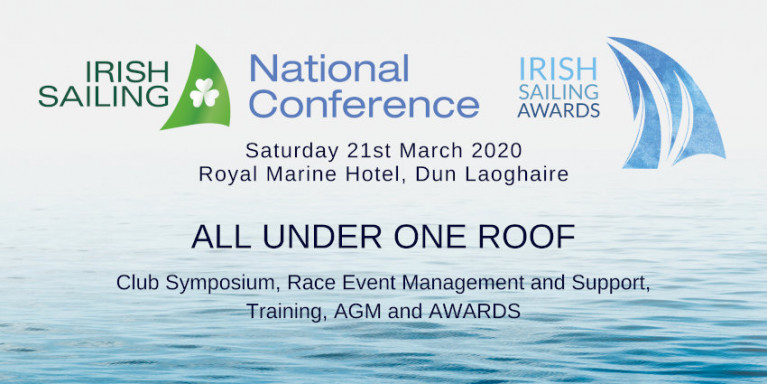Displaying items by tag: Irish Sailing
New President Elected at Irish Sailing AGM
Royal Cork Yacht Club's David O'Brien has been elected President of Irish Sailing taking over from Jack Roy at an AGM held last weekend.
Due to Covid-19 restrictions, the AGM was attended only by outgoing Roy and Chief Executive Harry Hermon with the quorum being achieved through proxy appointments from affiliated clubs.
The AGM also saw the retirement of Paddy McGlade and Sarah Byrne, both of whom had served their five-year term on the Board. Roy expressly thanked them for their work and commitment over the period, as he did with all of the Board members who contributed during his term as President.
New directors elected were Andrew Bradley nominated by the Royal Irish YC, and Sue Concannon nominated by Killaloe SC.
Download the annual report below.
Irish Sailing Awards Go Online – Join Us on Saturday
Although we’re not getting together in person for the Irish Sailing Awards on Saturday night (21 March), we want to get together on screen instead and celebrate as we announce the winners.
We’re going to do this on Saturday evening, starting at 6.30 pm, when we announce all the winners on our Facebook page here. You can join the event here. So on Saturday night, tune into our Facebook page, like and share, so we can celebrate all our nominees and winners.
The winners will also be announced on Afloat.
The Awards are supported by Dun Laoghaire-Rathdown County Council and in association with Afloat
The Awards will be announced as follows:
- Irish Sailing Senior Instructor of the Year
- Irish Sailing Inclusion Award
- Irish Sailing Sustainability Award
- Irish Sailing Youth Sailor of the Year
- Irish Sailing Training Centre of the Year
- Irish Sailing/Afloat.ie Sailor of the Year
- Irish Sailing President’s Award
You can read about our nominees here
Irish Sailing ‘Following HSE Advice’ On Coronavirus, All Events Going Ahead As Scheduled
Irish Sailing confirms it is following HSE advice regarding COVID-19/coronavirus, which at present does not prohibit public gatherings and/or impose travel restrictions other than to China and northern Italy.
“Until further advice is issued, we will assume that all events are able to go ahead as scheduled,” says Irish Sailing chief executive Harry Hermon.
“Taoiseach Leo Varadkar has said the Government is not recommending that ‘at this stage’ any planned large gatherings are cancelled. He also appealed for people not to take unilateral action when it come to closing schools or cancelling events.
“Should the position escalate and we feel that any updated advice will necessitate restrictions on sailing events in Ireland, we will send out a notice through our newsletter.”
Irish Sailing Publishes Buoyant 2019 Accounts
Irish Sailing has published its Financial Statements for 2019 ahead of next month's AGM in Dun Laoghaire.
Overall a surplus of €16,630 is reported for 2019 compared with a deficit in 2018 of €120,843. This is after total 2019 income improved by €236,236 to €2,359,236 from €2,123,400 in 2019.
The Association, the national governing body for sailing, experienced a significant improvement in its 2019 financial performance and enhanced its cash resources compared to 2018.
The key factors in contributing to this turnaround appear to include:
- €100,000 received from Sailfleet Company Ltd which use to own and manage the J80 Fleet and was sold off during 2019.
- €159, 126 from the Irish Sailing Foundation Ltd, an organisation set up to separately fund elite sailing activities.
Core Highlights
Highlights from the Core activities;
- Membership Income increased by 8% to €309,097 but the number of members is not disclosed.
- The Sport Ireland Government Grant increased by 19% to €62,000.
- Income generated from the issue of competency certificates increased by 31% to €64,316 in contrast to other income sources which largely remained flat.
- Handicap Certificates remains static at €70,559 which is probably indicative of zero growth in cruiser racing
- An increase in payroll costs of 7% to €532,911 and a doubling of legal and professional fees to €41,475 contributed to Core costs escalating by nearly €100k to €1,108,358.
Download the AGM notice below (with a link to the financial statements).
The Irish Sailing Association AGM will be held at the Royal Marine Hotel, Dun Laoghaire at 1630hrs on 21st March 2020
Book Now For Powerboat Training At The RSGYC
Places are still available for the latest powerboat training course at the Royal St George Yacht Club later this month.
The two-day course, on Saturday 29 February and Sunday 1 March from 8.45am to 5pm, provides the ideal way to get afloat for the first time, or to build on skills you already have.
The Irish Sailing syllabus Powerboat II course (National Powerboat Certificate) will formally teach you the fundamentals in the safe operation of a powerboat, its preparation and allied aspects, while helping you to build your confidence on the water and get the most from your RIB or powerboat in a safe and comfortable manner.
This weekend course (which will also run in May) is priced at €260 which includes all course materials, instruction and certifications. Book online via the RSGYC website HERE.
Irish Sailing’s McAllister On Jury Duty For Blue Flag Awards
Irish Sailing’s regional development officer Gail McAllister is among the jury for this year’s Blue Flag awards programme.
The national jury met last month to consider a total of 88 sites around Ireland comprising 80 beaches and eight marinas.
Their decisions will now be presented for evaluation to the Blue Flag International Jury and the results will be released in advance of the coming summer season.
Last year’s awards saw 80 out of 83 beaches retain their Blue Flag from 2018, while the number of rated marinas rose to eight with the inclusion of Rathmullan in Donegal.
“It is an honour to be part of this international scheme and I am excited to bring some new ideas to the Irish Sailing Sustainability Awareness programme,” said McAllister, who has also joined An Taisce as a ‘Climate Ambassador’.
Class Coaching Grant Now Open For Applications
Irish Sailing’s Class Coaching Grant for 2020 is now open for applications.
The grant allows sailing classes to apply for €400 for approved Irish Sailing coaches and €200 for non-approved coaches.
Currently approved coaches are displayed on the Irish Sailing website and will be updated regularly.
Approved coaching grants for 2019 were for the Wayfarer, E-Boat, Water Wag, 420, Mirror, IDRA, GP14, 2.4mR, Topper, Fireball, Laser 4.7, Laser Radial and Laser Standard.
Over 200 sailors benefited from the training in 2019 — 38% of whom were women and girls.
Details on how to apply, and all relevant terms and conditions, are available HERE.
Irish Sailing Cruising Conference Is Fully Booked
Next weekend’s Irish Sailing Cruising Conference is now fully booked, with delegates looking forward to a day of exploration and discovery.
As previously reported on Afloat.ie, the full programme of talks and sessions on Saturday 15 February will take in everything from exciting polar adventures to practical advice for more local cruisers.
Damian Foxall, Niall MacAllister and Lucy Hunt will share footage from the far side of the world — the team still have a small number of places for guests to join them in Antarctica’s waters.
And one lucky delegate will take home the Union Chandlery spot prize of a Seago 190 Pro Lifejacket currently valued at €210.
Irish Sailing Issues Guidance On WhatsApp Use By Members
Irish Sailing has published guidance on the use of WhatsApp by its members following recent concerns over GDPR issues.
As reported last week on Afloat.ie, privacy concerns prompted a call for Irish sports clubs to stop using WhatsApp for group chats — with experts in the field suggesting the popular smartphone messaging service “does not comply” with GDPR rules for official communications.
The governing body for sailing in Ireland says: “Similarly to the GAA, Irish Sailing is a data controller. We oversee all clubs that process information on membership and must ensure that this is compliant with legislation.”
Irish Sailing’s WhatsApp guidance can be downloaded as a Word document HERE.
Saturday 21 March is the date for Irish Sailing’s 2020 National Conference, AGM and Irish Sailing Awards at the Royal Marine Hotel in Dun Laoghaire.
This year the governing body is bringing all aspects of sailing here under one roof, with a choice of three conferences taking place simultaneously throughout the day.
Firstly, the Race Management and Support Conference will cover the promotion of racing, policies and race management training. It is open to anyone involved in events, not just race officials.
Meanwhile, the Training Conference has sessions that include preparing for the sailing season, developing instructors, improving standards and making the most of the Irish Sailing Passport. This conference is open to all training management, volunteers and instructors.
And all club management and volunteers are invited to the Club Symposium, for the sharing of ideas to promote sailing and with sessions on sustainability, inclusion and diversity, grant applications, bursaries, and new programmes from Irish Sailing.
Following the conferences, Irish Sailing’s AGM will take place at the Martello Suite, which in turn will be followed by a reception and the Irish Sailing Awards — decided from Afloat.ie’s Sailors of the Month in 2019 — in the Carlisle Suite.
Booking for each conference and for the Irish Sailing Awards is now available online, and special rates have been arranged at local hotels for those who wish to make a night of it.


























